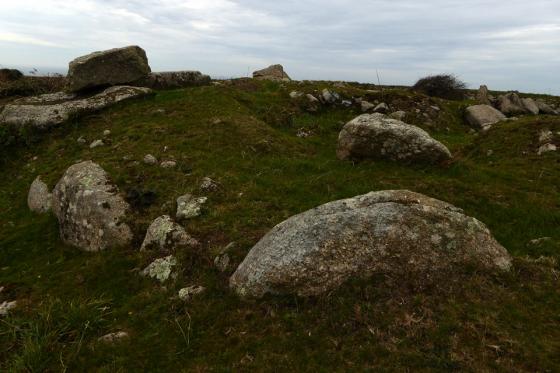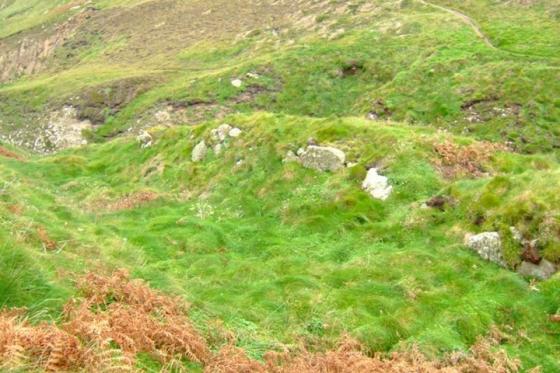Visited 23.6.2010. The last prehistoric wandering of my June hoilday. This one is prompted by a mention in the latest edition of Maen Mamvro magazine, which mentions that a recent clifftop fire has exposed this barrow for the first time for years – must be worth a look then.
A quick bus trip to Morvah, a village in possession of the only church in England dedicated to a Swedish saint (St Bri(d)get). It’s a pleasant stroll along the South West Coast Path to Chypraze Cliff, taking in views of Watch Croft, Carn Galva and Gurnard’s Head, before I come to a large area of burning on the seaward side. I’ve approached from the east, and make the mistake of heading off the path into the burned area too soon. After 10 minutes of poking about, I have interesting charcoal stripes all over my trousers, but no barrow to show for it. I head back to path and head further west. Almost at the end of the burned area, a small fenced off structure appears on the seaward side of the path – I have the barrow in my sights now.
Although confined behind a (hopefully temporary) post and wire fence, the barrow is a bit of a gem. The kerb in particular is very well preserved, almost contiguous and with its stones all leaning inwards at an angle of about 60 degrees. There’s not much left in the way of a mound, but the remains of a central cist can be seen. A small quartzite rock, about fist sized, can be seen in the remains of the mound.
As well as the barrow itself, there is a curving linear feature on the slope to the east, the remains of a prehistoric boundary feature of some kind and probably part of an early field system.
All in all this is a very worthwhile site to visit, especially before the bracken starts to encroach again as it inevitably will do. From here I follow the coast path west, until an intersecting footpath takes me back to Morvah, over granite stiles wreathed in the inevitable foxgloves. And the little tea room sells very nice home-made cakes. Yum!











































































































































































